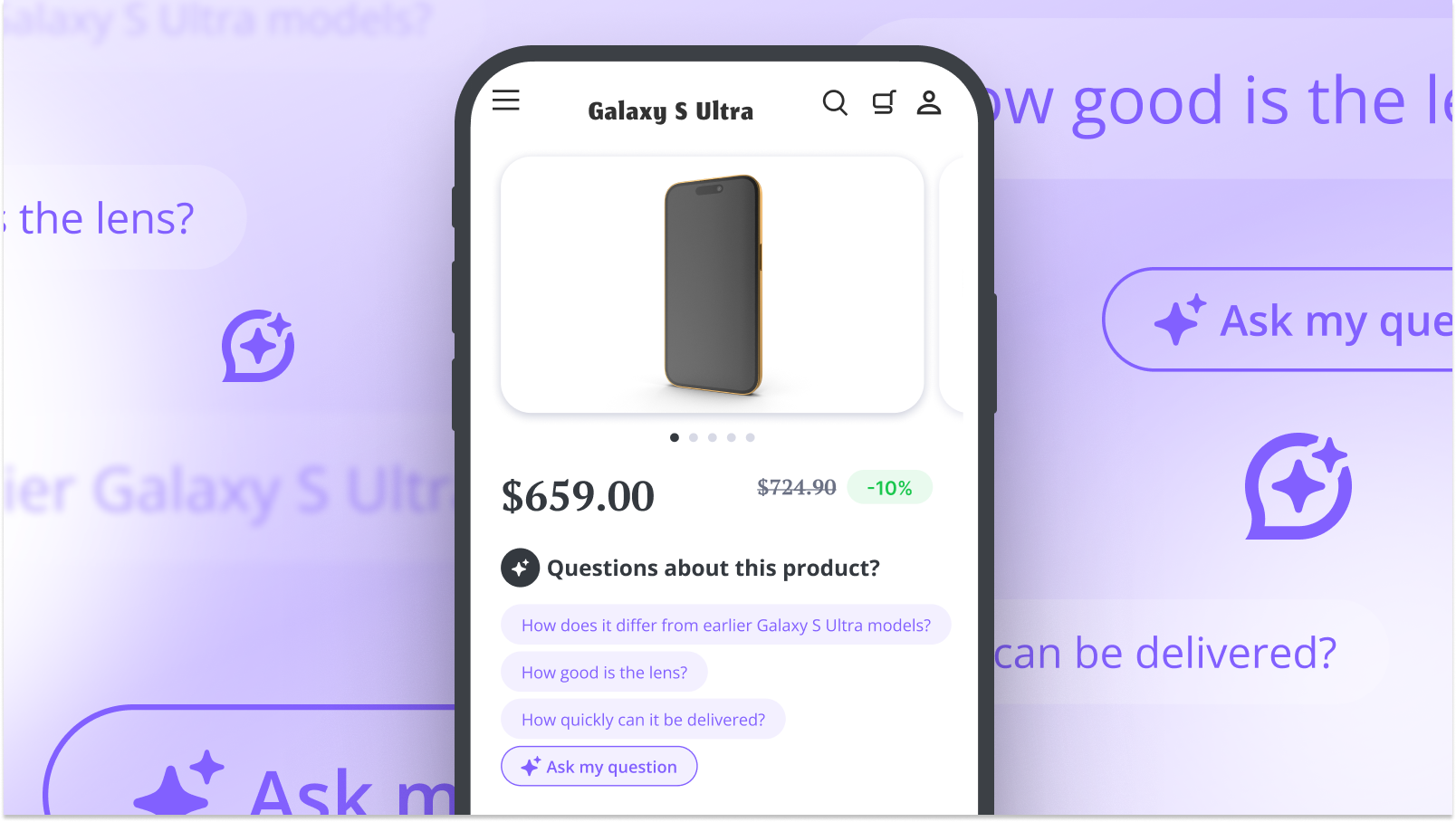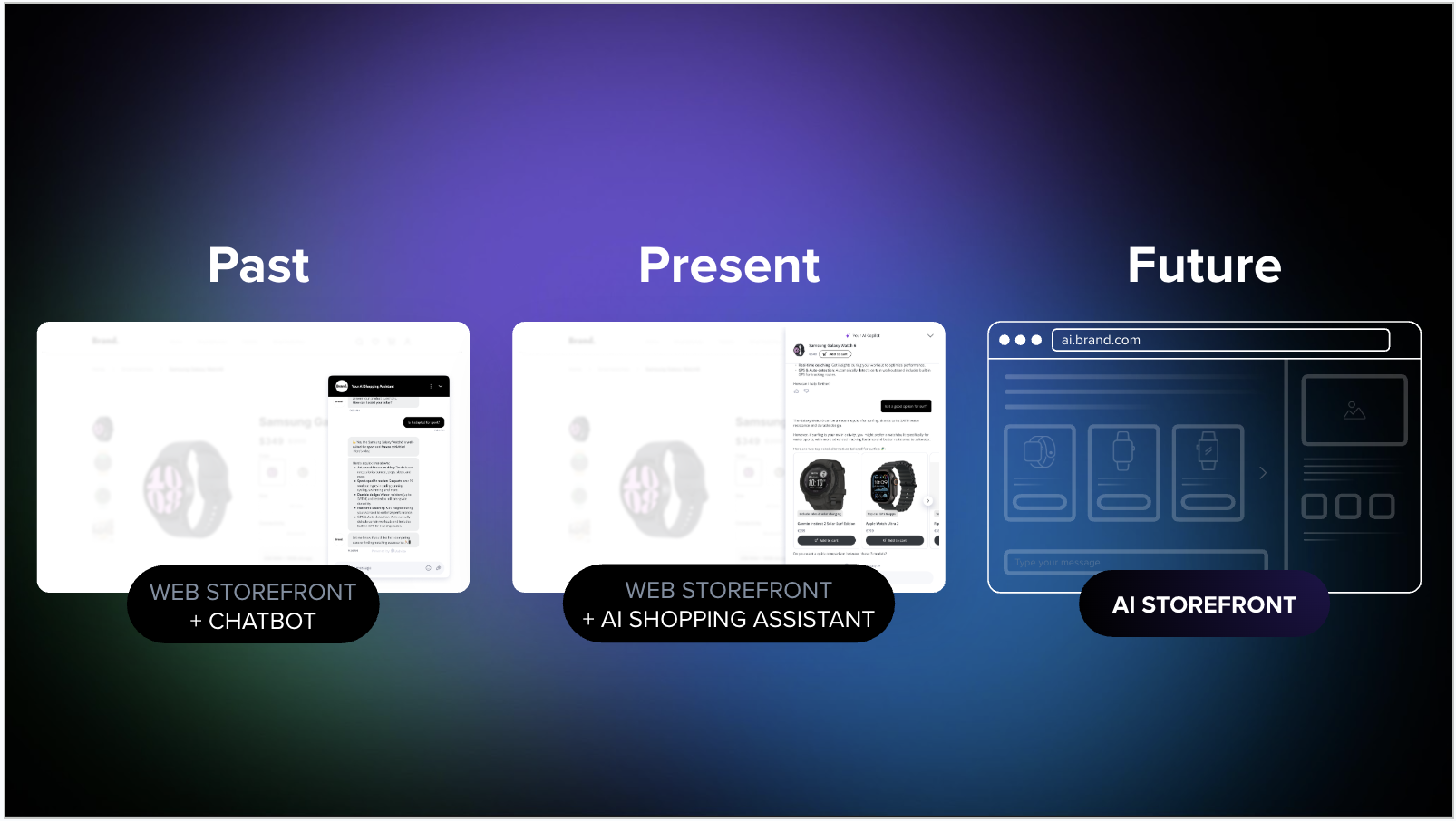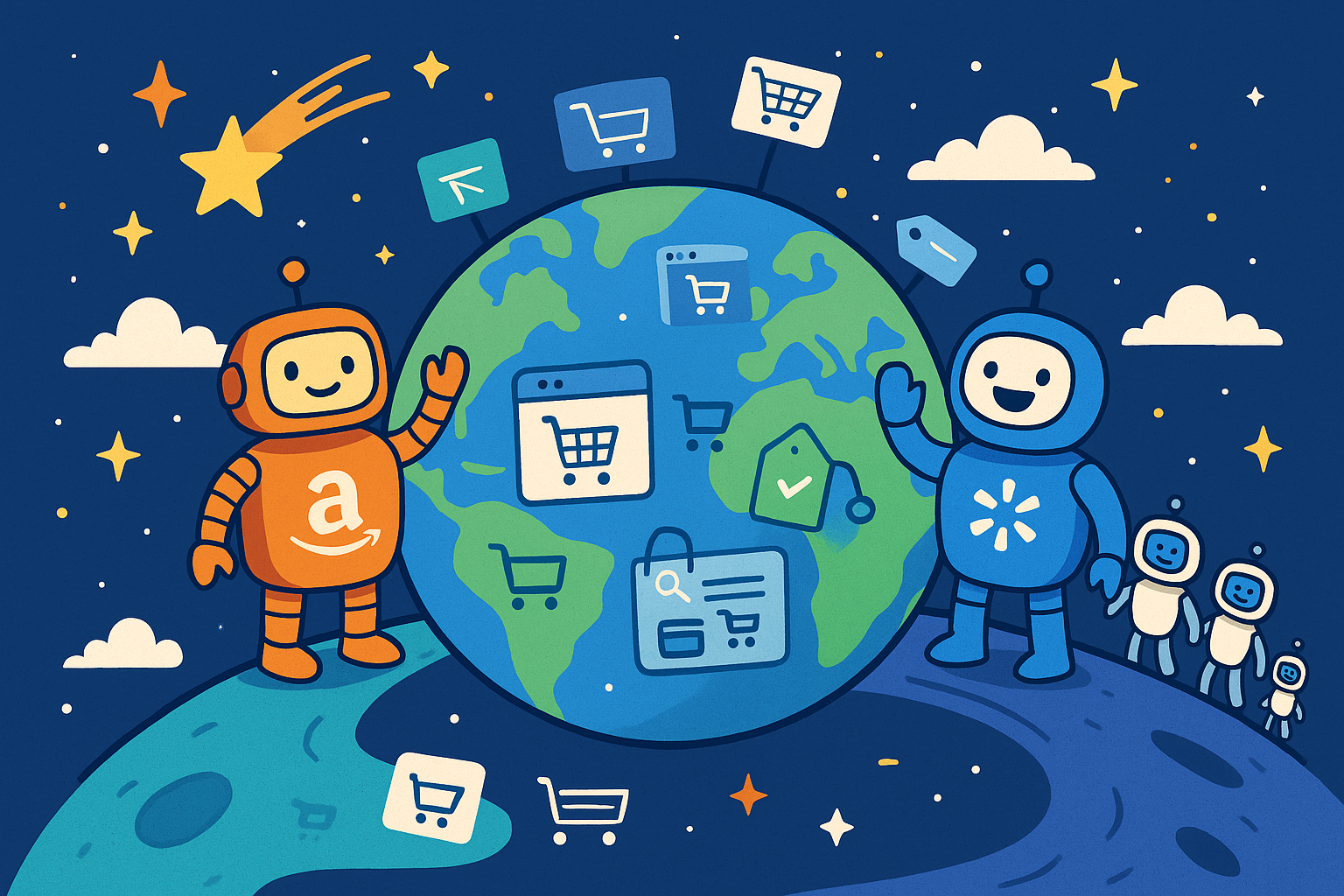How to 10x E-commerce Conversion with Conversational Engagement
Florent Gosselin, Chief Product Officer, iAdvize

In recent years, we've witnessed an unprecedented surge in artificial intelligence development, reshaping both the personal and professional landscapes. The widespread adoption of ChatGPT and generative AI assistants has sparked considerable interest among e-commerce businesses eager to explore how these advanced technologies can improve online shopping performance and enhance the customer experience. And yet, 97% of online buyer journeys still fail to convert. Learn how companies are leveraging conversational platforms and tools to enhance their website’s user experience and drive conversions.
Artificial Intelligence Has Revolutionized Conversational Commerce
If you think about it, the way we buy online hasn’t changed much in the last decade. The journey often begins with a search engine inquiry, followed by an extensive review of various content types—like blog posts, YouTube videos, and reviews on social media—eventually leading us to an e-commerce site where the search starts all over again.
Once there, the user experience is often so poor that it leads to 80% of shoppers abandoning their carts altogether. Shoppers must adapt to each website's user interface, navigate through unique digital product catalogs, and use filters and form elements to sift through the noise. If all goes accordingly, this should result in a list of products that match their preferences.
However, this isn’t the endpoint because consumers must, again, thoroughly examine the product pages they’ve decided are interesting to ensure that their potential purchases meet their needs before buying. Since this process is only successful 3% of the time, the online shopping experience is clearly in need of a revamp.
This revolution has already begun in conversational messaging.
Over the past year at iAdvize, we’ve helped hundreds of innovative brands worldwide deploy artificial intelligence Copilots powered by our Trusted Generative AI solution.
This new generation of virtual shopping assistants provides a better way to buy online. It helps shoppers identify the right products and gives them clear, accurate product information that’s based on the context of their requests. It essentially removes all the friction from conventional e-commerce user interfaces as consumers move from consideration to purchase.
The initial results of this technology are extremely promising. E-commerce brands are seeing their conversion rates increase up to 10x, while maintaining or improving customer satisfaction levels.
With this level of automation quality now in play, Copilots offer a new paradigm to e-commerce decision makers. Forrester and Google predict that the rise in Copilot adoption will accelerate in 2024, with 81% of retail leaders feeling ‘urgency’ to integrate generative artificial intelligence into their business. 72% of leaders feel ready to deploy this technology to automate their customer service and conversational commerce operations.
However, while generative artificial intelligence may have unlocked the true potential of conversational commerce, there’s still a major challenge to address—how do you scale it to reach as many of your site visitors as possible throughout their online shopping journey?
This is where conversational engagement comes in.
What Is Conversational Engagement?
Conversational engagement is a strategy that functions as the entry point for communication with companies via messaging. It works to maintain a two-way dialogue and build rapport between a consumer and the brand throughout the buying journey.
Over the years, it’s taken many forms:

Despite its evolution, this tactic still has its limitations, including:
- The messaging is often generic and not personalized to user context.
- Consumers expect an ineffective conversational experience.
- Since brands prefer to reserve human customer support teams for their most engaged audiences and most complex cases to promote better ROI and manage costs, it’s often displayed to a limited number of website visitors.
Now that generative AI chatbots can overcome these limitations by offering 24/7, high-quality conversational commerce experiences, it’s time to reinvent how consumers interact with artificial intelligence throughout their online shopping journey.
Copilots act as drivers for increasing conversion and improving the quality of digital customer experiences. Because of this, brands should no longer consider conversational engagement as an add-on feature to their e-commerce UX. Instead, they should incorporate this innovation as the new standard for improving their online conversion rate.

Transforming E-commerce UX With AI-powered Conversational Engagement
At iAdvize, we’ve introduced Conversation Starters, a form of conversational engagement powered by our Trusted Generative AI solution.
This new format anticipates the requests online shoppers will have at the start of their buying journey, based on context clues from their browsing habits. Our artificial intelligence model then provides guiding question prompts to help get the conversation started. This gives buyers an easy way to explore products on a website, ask questions, and receive personalized advice and recommendations.
After clicking one of the suggested question prompts, the buyer will get an immediate response from a bot. From there, they can ask more questions via messaging before completing their purchase.
Conversation Starters are designed to appear at strategic points in the customer's online journey, from initial browsing through the consideration and decision stages. Each prompt button is tailored to the specific context of the user's past interactions on the website. The questions that appear are the ones our AI has determined to be the most influential for encouraging a sale.
- For example, on a product listing page (PLP), a Conversation Starter might suggest questions to refine its product discovery process or highlight products based on the user's past interactions and preferences (e.g. “Do you have bikes for both on pavement and off-roading?”, “What are the best headphones under $100?”, or “Can you suggest smartphones with good cameras?”.)
- On a product detail page (PDP), it might offer detailed product information, like “Is this bike good for long-distance riding?” or “Is this TV compatible with all video game consoles?". It can also reassure the user by including information on warranty, service, or payment conditions relevant to their interests, like “Can I use a payment plan?”, “How does the warranty work?”, and “Can I get help assembling this wardrobe?”.
Conversation Starters will become a key component of navigating the e-commerce UX, positioning AI-based chatbots as valuable and helpful assistants that increase conversion.
Our Product & Design teams have crafted these new Conversation Starter buttons with several key principles in mind:
- Personalization: The button placement and text is customized to each user's history, context, habits, and preferences. This ensures a tailored shopping experience.
- Accessibility: The design and tone are natural and friendly, encouraging users to engage without breaking their experience.
- Transparency: It’s clear to the user that they’re interacting with artificial intelligence to help set expectations and build trust in the accuracy of the information being provided.
- Valuable: The buttons convey their value before the user even interacts with them.
The Benefits of Using Artificial Intelligence for Customer Engagement
Integrating Conversation Starters into the e-commerce user experience has a profound impact on customer engagement and, by extension, on online sales and customer experience. By providing personalized, proactive assistance at critical points in the shopping journey, these buttons reduce friction, clarify product value, and create a conversational commerce experience that helps customers make confident purchasing decisions.
Question buttons that are based on past conversations with customers, strategically placed, and crafted to be tailored to the site visitor are scaled by artificial intelligence. They provide a gateway to a new online shopping user interface with conversation at the core and show customers’ the value of your products right from the start.

However, leveraging large language models (LLM) and basic chatbot platforms is not enough to create such experiences at scale. The following elements are also essential:
- Structured and comprehensive data management (product catalogs, FAQs, online conversion performance history, customer interaction patterns, etc.)
- Artificial intelligence security & privacy safeguards
- Optimized and cost-efficient tech stack
- Thoughtful conversational UX
- The possibility of human escalation—meaning the option to transfer virtual assistant-managed conversations to human-to-human interactions with agents
Not all e-commerce sites are ready for this, but the race is on. The transition in conversational commerce from selective, expensive engagement models to an inclusive and cost-effective approach driven by artificial intelligence represents a significant leap forward that will redefine the digital experience.
Brands that embrace this shift have the opportunity to increase their sales up to 10x and optimize costs, giving them a competitive advantage in their industry.
Implementing Conversational Engagement In Your Online User Experience
Incorporating Conversation Starters into your e-commerce strategy is a transformative move that can elevate your brand's online sales performance and customer experience.
This integration goes beyond just technical implementation. You should look at your shopping journey holistically, and determine where you can integrate conversation to derive the most impact on conversion and create more consistent, reliable responses to users.
Here's a step-by-step guide to navigating this process effectively:
1. Identify Business Objectives & Metrics For Success
Clear objectives and measurable success metrics are crucial. Are you aiming to increase conversions, boost average order value (AOV), enhance customer satisfaction, or optimize operational costs? Setting these goals upfront will guide your strategy and provide a framework for measuring the impact of conversational engagement on your e-commerce performance.
2. Understand Your Customers' Journey
Mapping out your customers' journey from start to finish and identifying touchpoints where conversation would enhance engagement is a good starting point. Look for key decision-making points, like when your customers are looking for inspiration or clarification, choosing between products, trying to understand product features, or finalizing purchases. Pinpointing these will allow you to tailor your conversational tactics and pick the right datasets to leverage in order to provide the best value and assistance to your shoppers. Here are 30 online shopping statistics that can help you.
3. Design A UX That Promotes Conversational Engagement
Designing impactful conversational journeys requires strategic placement of Conversation Starters within your e-commerce user interface. It must be both context-aware and natively integrated with your UI components to optimize engagement in a way that drives conversion. It’s also important to tailor Conversation Starters and Copilot messaging to your brand voice.
4. Set Up Your Knowledge Base
Before launching an AI chatbot or Conversation Starters on your website, establishing a robust knowledge base is critical. This could look like creating a product catalog that includes detailed descriptions of each product and warranty, payment, and service information. The more exhaustive this data is, the better your Copilot will be able to offer a reliable and unique experience to your online shoppers.
5. Test & Optimize
Start with a pilot program to test Conversation Starters on a segment of your site or for a specific product category. Collect data and feedback from these initial interactions to understand what works well and what needs improvement, and then use this feedback to refine your knowledge base and UI design.
6. Make It A Cross-Functional Project
From our experience, the deployment of conversational commerce tactics are more successful when considered on a strategic level with multiple teams involved. We recommend including product, UX, e-commerce, and customer experience teams on these types of projects.
7. Fine-Tune & Expand
As you fine-tune your features and start to see positive results, consider scaling and expanding them across the entire online buying journey. Explore new ways to leverage artificial intelligence for personalized recommendations or support during the checkout process and post-purchase to encourage repeat business and build customer loyalty.
Looking Ahead for Conversational Customer Engagement
As we begin to roll out the first generation of Conversation Starters with our clients, the potential for an even more sophisticated user experience is emerging. Word-of-mouth and the results of generative AI in action are spreading quickly, and later iterations could include even more personalization that's rooted in a deeper understanding of consumer preferences.

We envision a future where conversation will be an extension of the e-commerce user experience. Customers will soon benefit from a frictionless online shopping journey accompanied by a bot, and the increasing adoption of generative artificial intelligence will only accelerate this new norm.

.png)
.png)





